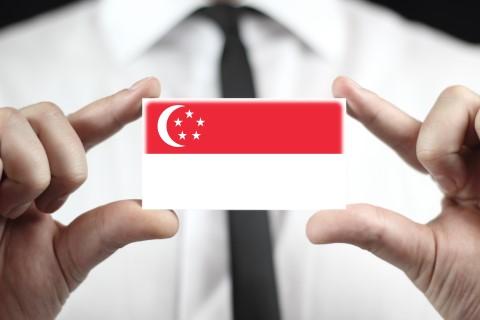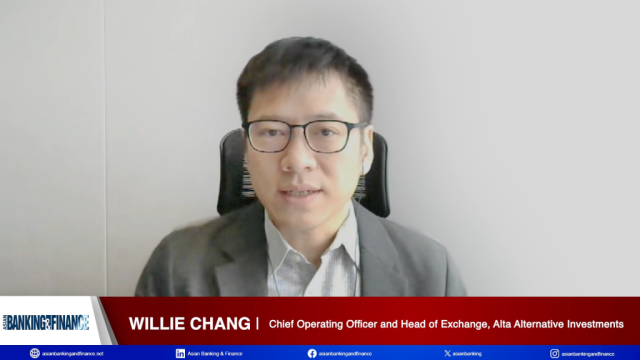
Solvency issues weighing heavily on the Singapore banking sector
But optimists insist the worst is over.
When credit rating agency Fitch Ratings downgraded its sector outlook for Singapore banks to “negative” last December, it warned that softer macroeconomic conditions and a more challenging operating environment would pummel the sector in 2017. “This could place broadening pressure on asset quality and dampen earnings over the next year,” says Mark Young, head of Asia-Pacific banks at Fitch Ratings.
However, Fitch Ratings maintained “stable” outlooks for Singapore banks, supported by solid credit profiles characterised by steady funding and liquidity positions, strong loss-absorption buffers, and healthy profitability. Singapore banks will be most wary of the troubled oil & gas (O&G) sector in 2017, which will likely continue to exert moderate pressure on asset quality. “Prolonged economic weakness could lead to broader asset-quality risks which may also affect small- and medium-sized businesses. However, we believe the downside risks to be manageable,” says Young.
Young estimates that Singapore banks’ combined exposure of S$16.1 billion to the distressed offshore support services sector accounted for 17% of their core equity Tier 1 capital at end-September 2016. “Asset quality continues to deteriorate across banks with weakness still coming from the O&G support services,” says Young.
Deteriorating solvency metrics led Moody's Investors Service to downgrade baseline credit assessments for the three Singaporean banks — DBS, OCBC, and UOB — last December. "Weakening solvency metrics — namely asset quality and profitability — have contributed to today's BCA (baseline credit assessments) downgrades to a1 from aa3,” says Eugene Tarzimanov, VP – senior credit officer, financial institutions group, Moody’s Investors Service.
“The ongoing credit challenges that these banks face at home and broadly in Asia — where around 50% of their loans are — have translated into higher problem assets this year, and Moody's expects further negative pressure on asset quality in 2017 to create downward pressure on profitability due to higher credit provisions,” he adds.
DBS, for example, saw its problem loan ratio rise to 1.3% at end-September 2016, from 0.9% a year ago, mainly due to asset quality issues from its offshore and marine sector exposures, including Swiber Holdings Ltd., a large Singapore-based services company that defaulted on its bond repayment and filed for judicial management in August 2016.
Then in November 2016, DBS indicated that its remaining oil services exposures with potential asset quality weakness had increased to 20% of its oil service portfolio, from 13% in the previous quarter. As such, DBS expects more NPLs to surface from its oil services portfolio in the coming quarters, says Tarzimanov.
Problem assets in China have also been a key stress point for Singapore banks, so they are focusing on relatively less risky top-tier state-owned enterprises, large corporations, foreign investment enterprises, and short-term trade loans.
Tarzimanov says that the BCAs of the banks can face further downward pressure given three scenarios. First, if new non-performing loan formation remains elevated, pointing towards a material worsening of asset quality metrics. Second, if return on assets ratios deteriorate significantly due either to lower core profits or increased credit costs. And third, if capital buffers decline continuously over several quarters, indicating a deterioration in loss absorption buffers.
Conversely, improvements in the macroeconomic conditions in Singapore and in the region as well as in the banks' financial metrics would be credit positive for the banks' BCAs.
Ng Li Hiang, analyst at Maybank, shares the negative outlook on the Singapore banking sector especially in the face of worsening asset quality and how system loan growth continued into its 11th consecutive month of negative year-on-year (yoy) growth. As of September 2016, banks’ special mention and classified exposures
continued to worsen, with system NPL ratio reaching 2.1%, a level not seen since June 2010, according to Ng.
Softer profitability
Aside from the declining asset quality, Singapore banks will also spend 2017 licking their profit wounds. “We expect banks’ profitability to weaken slightly in 2017, driven by higher credit costs and a subdued domestic lending environment,” says Young. “This is balanced, however, by their diversified revenue, with core non-interest income forming close to 40% of operating income — of which more than half represented recurring fee income over 2012-2015.”
Young adds that banks will experience a net interest margin (NIM) uplift from higher short-term rates which tend to track the US Fed funds rate.
Among Singapore banks, DBS has shown more resilience relative to its peers when it comes to profitability, but has, nevertheless, been impacted as well by higher credit costs stemming from asset quality deterioration, says Tarzimanov. The bank’s return on tangible assets deteriorated slightly to 0.98% at end-September 2016, from 1.05% a year ago. Moody's expects OCBC’s profitability to decrease slightly in 2017, due to elevated credit costs and an uncertain outlook for the net interest margin.
Solid capitalisation
Despite the solvency issues they face, Singapore banks have aces up its sleeve, namely solid capitalisation that will help them keep afloat despite plunges in asset quality and profitability. Long-term prospects also seem to be in favor of Singapore banks.
Melissa Kuang, analyst at Goldman Sachs reckons higher LIBOR should benefit NIM in the longer term though banks may see near-term funding pressure, with a potential Fed rate hike posting further upside to NIM. She also notes that operating expenses of Singapore banks remain well managed. Aggregate operating cost was up 3% yoy as of September 2016, with DBS performing the best at 2% yoy mainly on productivity gain. “We expect banks to continue to tighten cost control as topline growth is likely to remain weak,” says Kuang.
Young, meanwhile, expects capitalisation to remain stable despite modestly higher risk-weight charges that will affect the banks from the beginning of January 2017 due to healthy internal capital generation. “Our internal stress tests show that sound capital buffers should enable Singapore banks to weather a significant deterioration in credit quality. We expect Singapore banks to retain their domestic deposit franchise strengths,” Young adds.
Singapore dollar LCR stood soundly in excess of 200% for the third quarter of 2016 (3Q16), and their Singapore dollar loan-deposit ratios had improved to 86.0% by end-September, from 88.7% in June and 87.2% in March. The banks’ all-currency LCR also averaged a comfortable 132% for 3Q16.
Tarzimanov assures that despite the rating actions that Moody’s enacted, large Singapore banks still maintain robust intrinsic credit metrics in both the global and regional context. Affirmed Aa1 senior debt and deposit ratings benefit as well from strong support from the Government of Singapore in case of need.
Only lingering concerns?
Some analysts have also raised their earnings forecasts for Singapore banks. Sue Lin Lim, analyst, Singapore research team at DBS reckons FY17-18F earnings will climb on the back of higher NIM in anticipation of rising interest rates. Lim says investors should lean towards OCBC, a preferred bet due to its ability to maintain lower than peers’ credit cost trends, for serving as a better wealth management play, and posing possible earnings surprises from its insurance business in a rising interest rate environment.
“With rate hikes almost a certainty in the coming quarters, the Singapore banks are almost surely to deliver higher NIM,” says Lim. “We have imputed 8-10bps rise in NIM for FY17F. Our sensitivity analysis suggests that every additional 25bps increase SIBOR/SOR translates approximately to a 6bps increase in NIM (ceteris paribus), and will lift earnings by another 4%.”
But she warns that loan growth will likely remain sluggish, which will limit net interest income growth. Lim also believes that the bulk of NPL issues has passed, although there are still lingering concerns, especially given increased government intervention in the troubled O&G sector. The Ministry of Trade and Industry announced enhanced support measures for the O&G sector in the form of new incremental loan facilities from SPRING Singapore and IE Singapore to Singapore-based industry players.
“We believe this has brought some relief to companies which are experiencing tight cash flow, and, hence, extend some respite to banks in terms of NPL incidences,” says Lim.
Singapore banks are also riding a wave of optimism, having rallied 8% since Donald Trump’s US presidential victory and with more certainty of rate hikes. “The market appears to be disregarding any downside risk to further NPL issues albeit on a smaller scale and the sluggish economy. A more sustainable earnings and growth trends to watch would be what banks can do over the longer term, especially in the wealth management space,” says Lim.























 Advertise
Advertise







